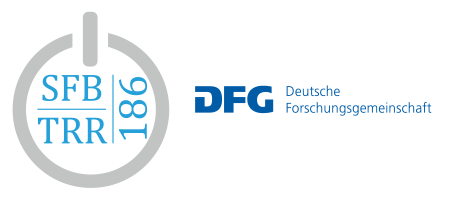Acute control of intracellular trafficking through Rab GTPases in living tisssues in Drosophila.
Rab GTPases are molecular switches that regulate membrane trafficking in all cells. Drosophila is a ge- netic model organism that offers the opportunity to systematically study gene functions and membrane traf- ficking during multicellular tissue development. The goal of project A02 is to identify and characterize the developmental roles of Rab GTPase-mediated membrane trafficking in developing tissues. In a first phase, collaborative work in project A02 has generated transgenic fly collections including all rab null mutants and development of the RUSH acute release system for all Rab GTPases, totaling more than 60 fly strains. In a second phase, utilization of these tools has identified membrane secretion and degradation mechanisms as- sociated with dynamic filopodia in both epithelial tissue and neuronal cells. In photoreceptor axonal terminals, filopodial dynamics control the development of synapse numbers. The Hiesinger lab has shown that the dy- namics and stability of filopodia is regulated by membrane trafficking and the ability to switch autophagy on and off at filopodial tips. Synaptic building materials need to accumulate in filopodia to allow synapse formation, and autophagic degradation counterbalances this process. Several Rab proteins are present in these filopodia, but their regulatory roles remain to be characterized. In the second model tissue, developing wing discs, Wnt signaling plays important roles that have guided understanding of Wnt signaling in embryogenesis, homeosta- sis and disease. Identifying the precise mechanisms of Wnt ligand secretion and trafficking is crucial to under- stand the distribution of Wnt proteins in tissues and their regulation of near and distant target genes. Recent work from the Boutros lab has shown that Wnts are actively secreted by filopodia. However, which Rab proteins are governing the formation, trafficking and secretion in filopodia remains unknown. Our ongoing collaborative work directly compares both filopodia-based processes and the Rab GTPases involved. Based on the foun- dation established during the first funding period, the three major goals of project A02 are: First, to complete the comprehensive identification of all developmentally required Rab GTPases in the developing Drosophila eye and wing tissues; second, to identify and characterize the Rab GTPase(s) that regulate autophagy in axonal filopodia of developing Drosophila photoreceptors during brain development; third, to identify and char- acterize the Rab GTPase(s) that regulate exosome-mediate Wnt secretion from filopodia in the wing imaginal disc. When this work is concluded, we will have provided (1) a comprehensive analysis of a class of membrane trafficking switches in the Drosophila model, and (2) analyses of specific roles of these switches in filopodia- mediated development of living tissues, based on a comparative analysis of eye and wing tissues.
Prof. Dr. Michael Boutros (Med. Fakultät Mannheim/Heidelberg)
Prof. Dr. P. Robin Hiesinger (FU Berlin)
